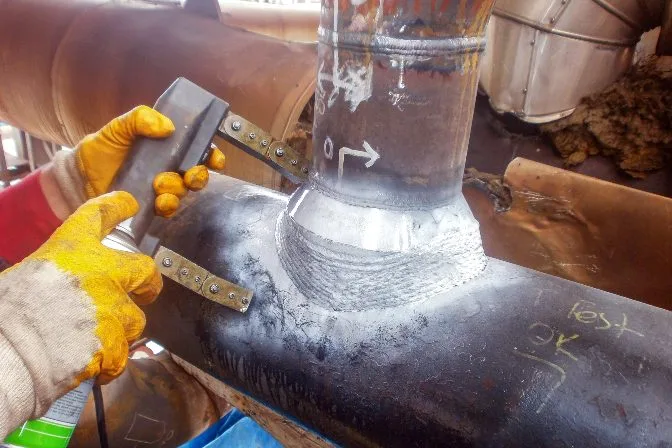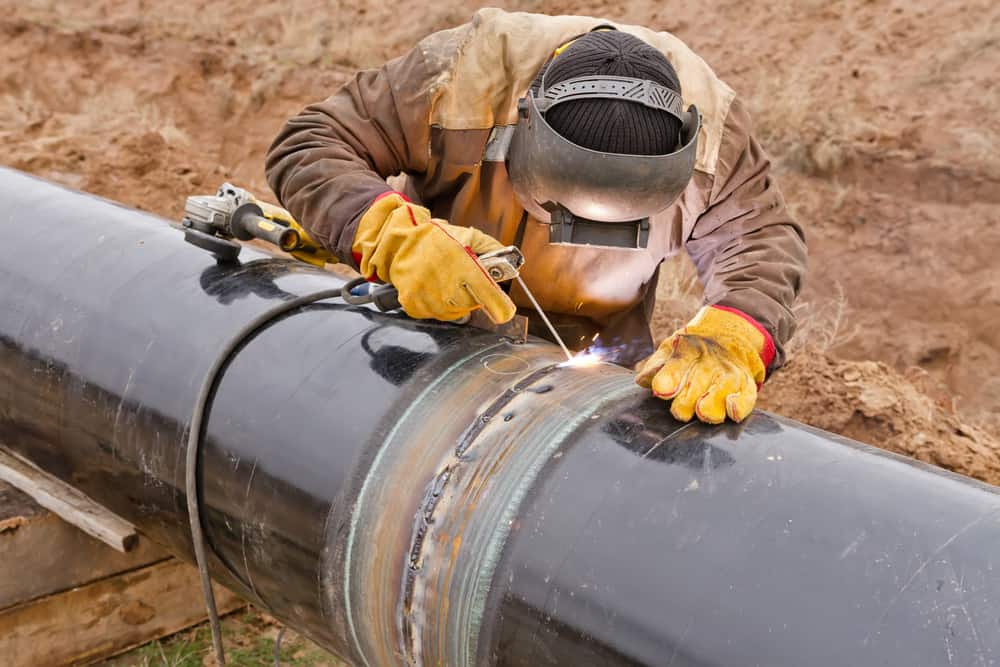Licensed Houston Welding Inspection Professionals for High-Quality Assessments
Licensed Houston Welding Inspection Professionals for High-Quality Assessments
Blog Article
Exploring the Principles of Welding Assessment: A Comprehensive Examination of Procedures, Tools, and the Relevance of High Quality Control in Welding Industries
Welding inspection acts as a cornerstone in the upkeep of safety and architectural stability across different markets. By taking a look at the vital procedures and devices used in these inspections, one can value the intricate balance in between quality control and conformity with established requirements from companies such as AWS and ANSI. The techniques used, including non-destructive and aesthetic screening techniques, are critical in detecting imperfections that might endanger the resilience of bonded frameworks. Recognizing the implications of these methods increases vital questions about their efficiency and the future instructions of top quality guarantee in welding.
Relevance of Welding Examination
Welding examination plays a crucial role in ensuring the integrity and safety and security of bonded frameworks. It works as a methodical method to assessing weld quality, identifying possible flaws, and making sure compliance with recognized standards and requirements. The value of welding assessment extends past simple adherence to regulations; it is pivotal in guarding human lives and shielding investments in infrastructure.
Malfunctioning welds can cause devastating failings, leading to significant financial losses, injury, or loss of life. Therefore, extensive evaluation procedures are vital to spot concerns such as insufficient infiltration, porosity, or fractures prior to they rise into important failings. Additionally, efficient welding inspection adds to the overall performance and long life of structures, making sure that they can hold up against the conditions for which they were created.
Moreover, the application of welding assessment fosters a culture of high quality and liability within the welding sector. By prioritizing evaluation, companies show their dedication to quality, thus improving their online reputation and competitiveness in the marketplace. Eventually, welding assessment is not just a step-by-step action yet a fundamental component of engineering integrity and safety assurance, important for the successful execution of welding jobs across different industries.
Secret Assessment Processes
A comprehensive approach to welding examination entails a number of essential procedures that are necessary for making sure weld quality and architectural stability. The first critical procedure is visual examination, which enables inspectors to recognize surface issues such as fractures, porosity, and improper grain appearance. This approach functions as an initial assessment to make certain that the weld satisfies defined requirements.

Additionally, damaging testing may be done on example welds to examine their mechanical properties and performance under stress. This process involves tiredness, impact, and tensile testing to confirm that the weld can hold up against functional problems.
Finally, documentation and reporting are crucial elements of the evaluation process. Keeping exact records of inspections, monitorings, and test results helps make certain conformity with industry criteria and assists in consistent improvement in welding techniques. Collectively, these essential processes create the backbone of reliable welding assessment and high quality guarantee.
Tools for Weld Evaluation
Countless tools are essential for efficient weld evaluation, each made to evaluate various elements of weld top quality and performance. Amongst the most commonly used are aesthetic inspection tools, consisting of magnifying glasses and borescopes, which allow assessors to identify surface area defects such as fractures, porosity, and inappropriate fusion.
In addition, ultrasonic testing (UT) devices is critical for discovering inner flaws. This device uses high-frequency sound waves to expose discontinuities within the weld, guaranteeing the honesty of the product. Radiographic testing (RT) tools, which use X-rays or gamma rays, in a similar way check my reference provide insight into the interior framework of welds, allowing for the identification of additions or gaps.
For specific measurements, calipers and assesses play a substantial duty in making sure and establishing weld measurements adherence to defined resistances. Solidity testers review the mechanical residential or commercial properties of the weld, ensuring it satisfies performance requirements.

Techniques for Analyzing Quality
How can the high quality of welds be dependably analyzed? A variety of methods are utilized to examine weld honesty and ensure adherence to specified requirements.
Ultrasonic testing (UT) is one more noticeable strategy that uses high-frequency acoustic waves to spot interior problems within the weld. Houston Welding Inspection. This approach gives a comprehensive sight of the weld's integrity without compromising its structural integrity. Furthermore, radiographic testing (RT) uses X-rays or gamma rays to disclose inner issues, supplying thorough understandings right into weld high quality
Magnetic bit testing (MT) works for discovering surface and near-surface gaps in ferromagnetic materials, using electromagnetic fields and tinted fragments to highlight issues. Color penetrant screening (PT) can be employed to reveal surface-breaking problems by applying a color that leaks into cracks and is ultimately exposed.
Compliance With Market Criteria
Compliance with sector requirements is essential for making certain the high quality and safety of bonded structures. These criteria, established by companies such as the American Welding Society (AWS) and the American National Standards Institute (ANSI), give guidelines that control the welding process, products, and evaluation methods. Adhering to these criteria not only makes certain the discover here structural honesty of welds but additionally mitigates dangers associated with failures that can result in tragic consequences.

Welding assessors are tasked with confirming conformity with these standards throughout the welding process (Houston Welding Inspection). This includes analyzing welding procedures, keeping an eye on welder credentials, and conducting extensive examinations of the final product. Non-compliance can lead to considerable economic repercussions, project delays, and damage to a business's track record
Routine training and updates on standards are important to maintain employees notified and proficient, ensuring that all aspects of welding procedures meet or go beyond regulatory demands. Ultimately, commitment to industry standards offers as a structure for excellence in the welding sector, promoting safety and integrity in welded frameworks.

Conclusion
To conclude, welding evaluation acts as an essential part in keeping the safety and stability of bonded structures. Via the implementation of crucial examination processes and the usage of sophisticated devices and strategies, potential problems can be determined and resolved effectively. Adherence to industry requirements makes sure conformity and advertises a society of top quality within the welding sector. Ultimately, rigorous evaluation methods not only safeguard human lives however likewise improve the longevity and efficiency of bonded building and constructions.
Furthermore, the implementation of welding inspection fosters a society of high quality and responsibility within the welding industry. Inevitably, welding examination is not simply a procedural action yet an essential component of design stability and security guarantee, essential for the successful execution of welding tasks across various markets.
A detailed approach to welding examination includes several vital processes that are essential for making certain weld high quality and structural stability. These standards, developed by organizations such as the American Welding Culture (AWS) and the American National Standards Institute (ANSI), give guidelines that control the welding procedure, materials, and examination procedures.Welding assessors are charged with validating compliance with these criteria throughout the welding process.
Report this page